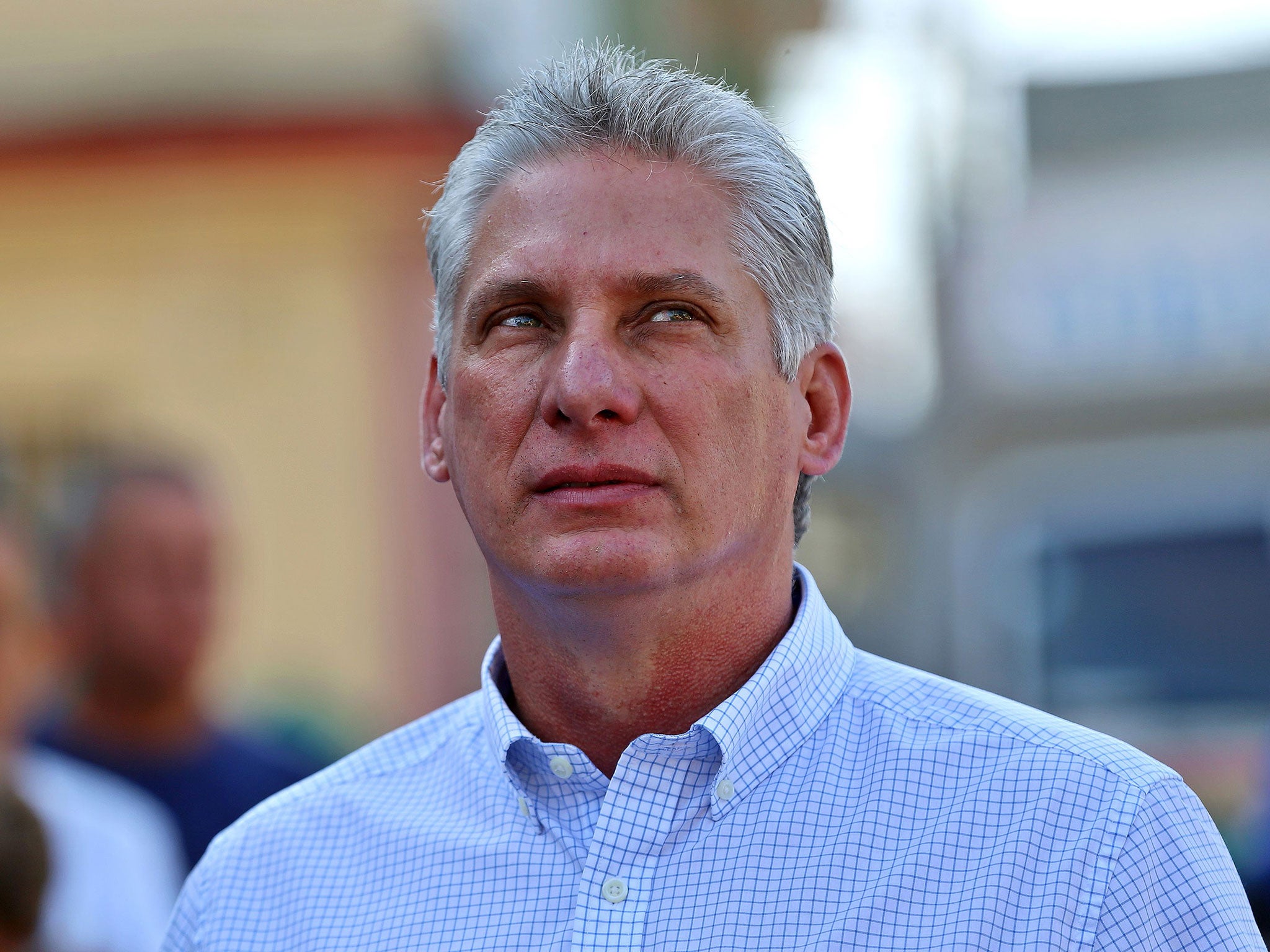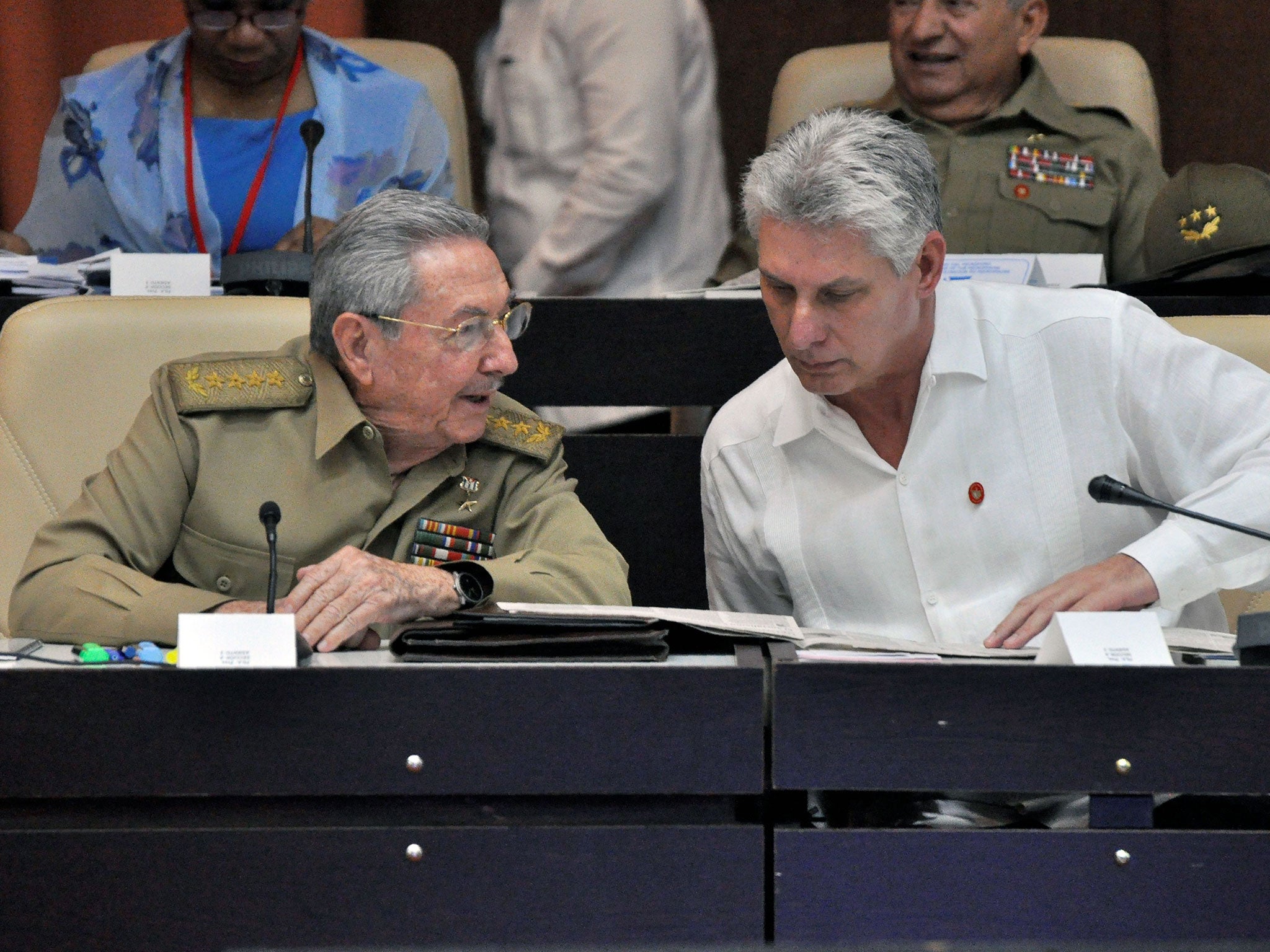Miguel Diaz-Canel: The former electrical engineer set to become Cuba's first non-Castro president
Raul Castro will retain considerable power as he remains head of the Communist Party
Your support helps us to tell the story
From reproductive rights to climate change to Big Tech, The Independent is on the ground when the story is developing. Whether it's investigating the financials of Elon Musk's pro-Trump PAC or producing our latest documentary, 'The A Word', which shines a light on the American women fighting for reproductive rights, we know how important it is to parse out the facts from the messaging.
At such a critical moment in US history, we need reporters on the ground. Your donation allows us to keep sending journalists to speak to both sides of the story.
The Independent is trusted by Americans across the entire political spectrum. And unlike many other quality news outlets, we choose not to lock Americans out of our reporting and analysis with paywalls. We believe quality journalism should be available to everyone, paid for by those who can afford it.
Your support makes all the difference.Cuba’s parliament will elect Miguel Diaz-Canel as its new president, ending the Castro family’s long rule of nearly 60 years.
The 57-year-old bureaucrat will take Raul Castro’s place as the government works to ensure the survival of one of the world’s last remaining communist states.
Regarded as a loyal and reliable member of the Communist Party, which is designated by the constitution as Cuba’s “superior guiding force of society and the state”, he trained as an electrical engineer and worked his way up the party’s ranks over the last three decades to become the country’s first vice president.

Mr Castro, who took over from his brother, Fidel, in 2006, will nonetheless retain considerable power after he retires, as he will remain head of the Communist Party until a congress in 2021.
Mr Diaz-Canel, the sole candidate for president, had his position ratified by Members of the National Assembly. The legislative body approves all executive branch proposals by margins of 95 per cent or higher.
An uncharismatic figure who until recently maintained an exceptionally low public profile, Mr Diaz-Canel’s image began to change this year as state media began focusing on his public appearances.
In comments to the press last month, he promised to make Cuba’s government more responsive to its people.

“We’re building a relationship between the government and the people here,” he said, after casting a ballot for members of the National Assembly. “The lives of those who will be elected have to be focused on relating to the people, listening to the people, investigating their problems and encouraging debate.”
Cubans hope Mr Diaz-Canel’s government will be able to resurrect one of the world’s last Soviet-style centrally planned economies, which has failed to improve under limited market reforms implemented by Mr Castro.
He will also inherit the challenge of managing Cuba’s relationship with the United States, which has declined after Donald Trump was elected US president.
Washington recently reduced staffing at its embassy in Havana to its lowest level since the 1970s, due to a spate of unexplained illnesses among its diplomats.
The US-Cuba detente, which saw improved relations under former US president Barack Obama, was a major highlight of Mr Castro’s presidency.
He also allowed Cubans to own property and travel more freely. Expanding internet access in the country, he also allowed people to won mobile phones, although his government continued to limit public dissent.
In an attempt to reinvigorate the economy, he encouraged the creation of small private businesses and encouraged greater foreign investment.
However, he failed to implement most of his planned reforms, including key ones such as the unification of Cuba’s dual currency system.
The Cuban peso (CUP) and the Cuban convertible peso (CUC) are both legal tender on the island, though neither is exchangeable in foreign markets.
Tied to the dollar the CUC is pegged to the dollar and worth 25 times as much as the CUP. The peso is used to pay most wages and buy local goods, while the CUC is used in the tourism industry, foreign trade and for luxury goods.
For more than two decades, two currencies have legally circulated in Cuba at multiple exchange rates, distorting the economy.
The task of linking them will now fall to Mr Diaz-Canel, who has the full force of the state behind him.
Cuban state media has gone into overdrive to drive home a single message - Cuba’s political system will continue in the face of change.

Join our commenting forum
Join thought-provoking conversations, follow other Independent readers and see their replies
Comments